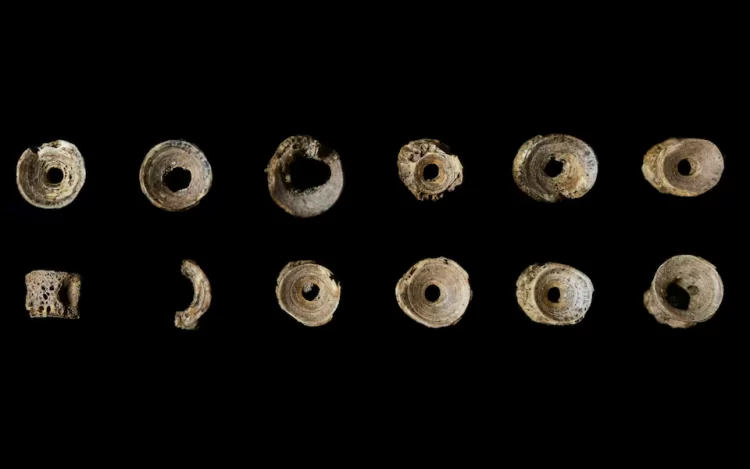The first prayer beads, which were found on the island of Lindisfarne, date from the 8th to 9th century AD and are made from salmon vertebrae
The first prayer beads ever unearthed in the United Kingdom were discovered in a burial on the island of Lindisfarne, off the coast of Northumberland. The necklace, made of fish vertebrae in the 8th or 9th centuries, is the sole relic ever discovered in a Lindisfarne burial.
The Holy Island of Lindisfarne, a religious institution founded by King Oswald of Northumbria in the 7th century, is notable for being the site of the first Viking invasion on Britain in 793 A.D. The Vikings returned several times during the next century, and the last of the monks fled in 875, carrying with them the beautiful Lindisfarne Gospels, written and illuminated around 700 A.D. by the monk Eadfrith.
Following the Norman conquest, a monastery was established on the island, although little of the Anglo-Saxon monastery remains, and there have been no significant excavations until lately. Dr. David Petts of the University of Durham joined with the crowdsourcing portal DigVentures in 2014 to seek funding for an archaeological study of the Anglo-Saxon priory site. Since then, excavations at the site have been crowdfunded.
During the 2021 dig season, the beads were discovered around the neck of an adult male, most likely a member of the monastic community. The holes in the vertebrae through which the spinal column travels were expanded, perhaps during the necklace’s construction or when the bones wore against the threads over time. Because fish were among the earliest recognisable emblems of Christianity, fish bones were both thematically fitting and a rich local resource for devotional jewelry.
The fish vertebrae appear to be prayer beads for personal devotion, according to Dr David Petts, the project co-director and a Durham University specialist in early Christianity: “We think of the grand ceremonial side of early medieval life in the monasteries and great works like the Lindisfarne Gospels.” But what we see here speaks to a far more personal side of early Christianity.”
He paid tribute to Marina Chorro Giner, a zooarchaeologist, for recognising the significance of the vertebrae: “This bright, eagle-eyed researcher looked at them and said, actually these aren’t just fish bones, they’ve been modified and turned into something.”
